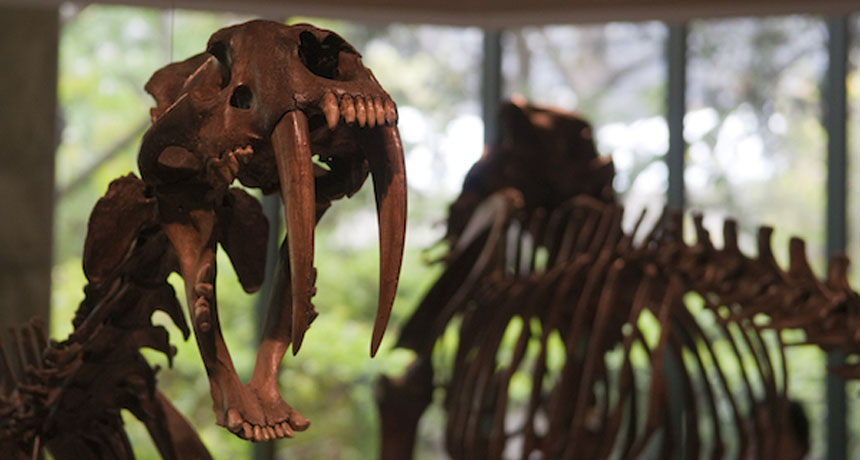Questions for Tar Pit Clues Provide Ice Age News

GEORGE C. PAGE MUSEUM
Share this:
- Share via email (Opens in new window) Email
- Click to share on Facebook (Opens in new window) Facebook
- Click to share on X (Opens in new window) X
- Click to share on Pinterest (Opens in new window) Pinterest
- Click to share on Reddit (Opens in new window) Reddit
- Share to Google Classroom (Opens in new window) Google Classroom
- Click to print (Opens in new window) Print
SCIENCE
Before reading
1) As recently as 13,000 years ago, during the last ice age, North America was home to saber-toothed cats, mastodons and other large mammals. Why do you think these animals went extinct?
2) What sorts of things can a fossil plant or animal tell you about the ancient environment in which it lived?
During reading
1) What seeps from the ground at Rancho La Brea?
2) List some of the animals whose fossil remains have been recovered from the La Brea Tar Pits. When did these animals live?
3) Describe the ice age environment of what is today Los Angeles.
4) What does a paleoentomologist study?
5) Explain what the leaves found wrapping the leafcutter bee pupae can tell us.
6) What is the most obvious feature of a Smilodon fatalis?
7) Why is carbon-14 used to date organic remains?
8) How does a dire wolf differ from a modern gray wolf?
9) Did saber-toothed cats grow smaller or larger when the climate cooled during the last ice age? Provide an explanation.
After reading
1) The tar pits probably trapped animals only during certain times of the year. Based on the research discussed in the article, explain how and why experts believe that was true.
2) List two places you could travel within California today to find the cooler and wetter conditions that were common during the last ice age in what is today Los Angeles.
SOCIAL STUDIES
1) Imagine horses had not gone extinct in North America at the end of the last ice age. What impact might that have had on Native American history? Keep in mind that the Spanish reintroduced horses into North America beginning in 1493.